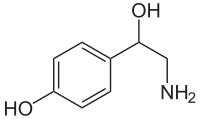
Photo from wikipedia
Cyclic adenosine monophosphate (cAMP) is a universal second messenger that mediates a myriad of cell functions across all kingdoms of life.The ability to monitor intracellular changes of cAMP concentration in… Click to show full abstract
Cyclic adenosine monophosphate (cAMP) is a universal second messenger that mediates a myriad of cell functions across all kingdoms of life.The ability to monitor intracellular changes of cAMP concentration in living cells using FRET-based biosensors is proving to be of paramount importance to unraveling the sophisticated organization of cAMP signaling.Here we describe the deployment of the fruit fly Drosophila melanogaster, specifically the third instar larval stage, as an in vivo model to study the spatio-temporal dynamics of cAMP in neurons. The ubiquity of cAMP signaling and conservation of fundamental mechanisms across species ensures relevance to vertebrate neurons while providing a more structurally and ethically simple model.
Journal Title: Methods in molecular biology
Year Published: 2022
Link to full text (if available)
Share on Social Media: Sign Up to like & get
recommendations!